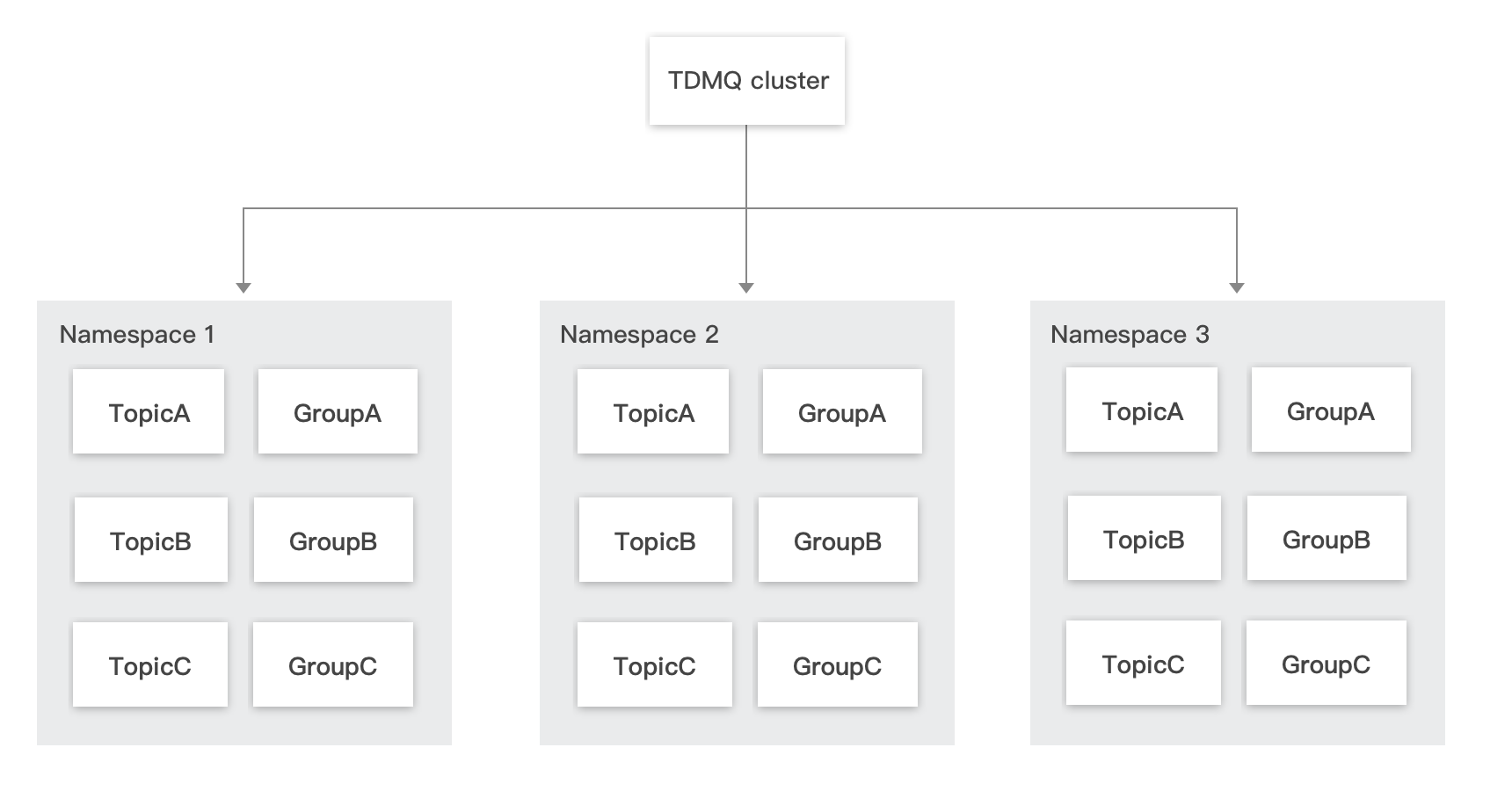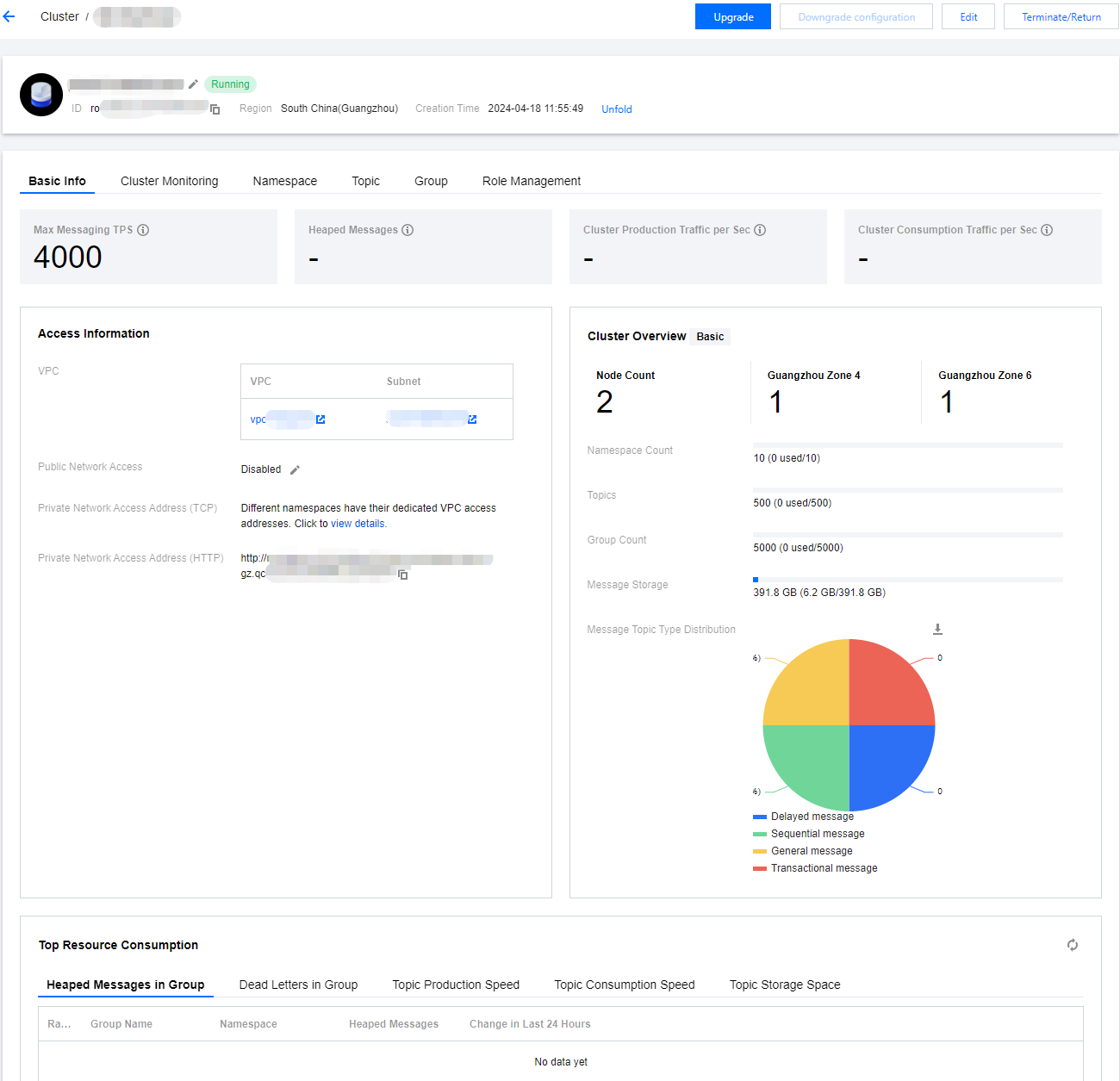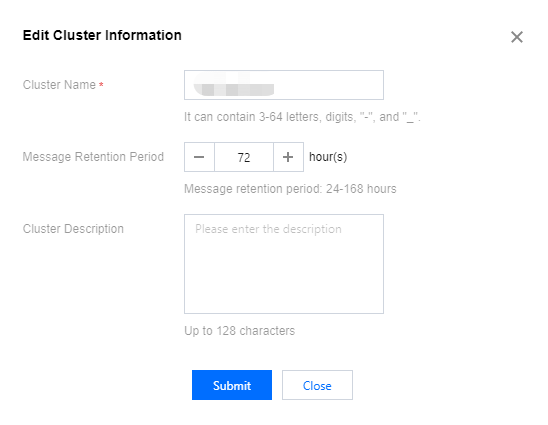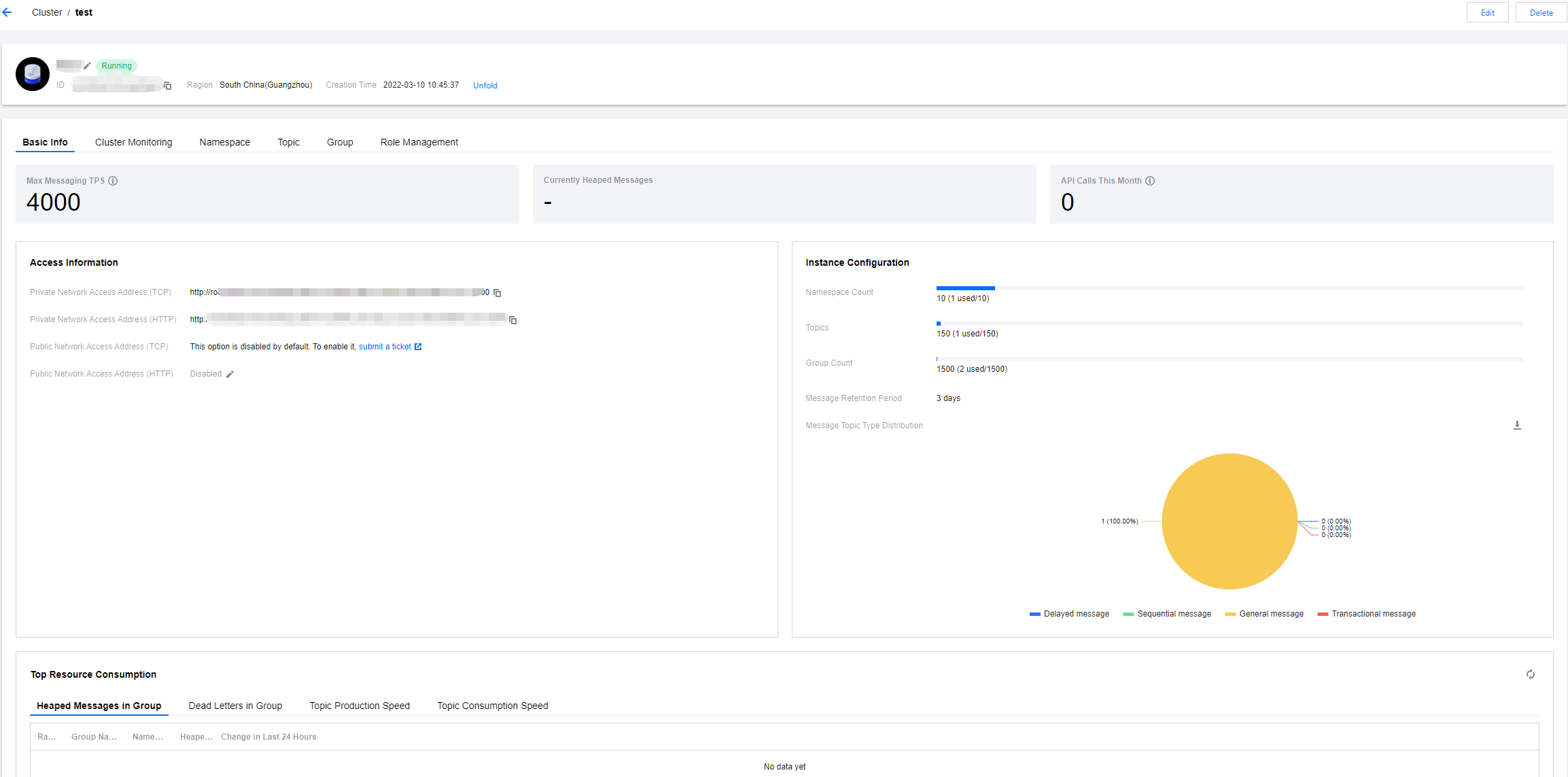- Release Notes and Announcements
- Product Introduction
- Purchase Guide
- RocketMQ 5.x
- RocketMQ 4.x
- Product Introduction
- Purchase Guide
- Getting Started
- Operation Guide
- Development Guide
- SDK Documentation
- Migration to Cloud
- API Documentation
- FAQs
- TDMQ FOR ROCKETMQ SERVICE LEVEL AGREEMENT
- Contact Us
- Release Notes and Announcements
- Product Introduction
- Purchase Guide
- RocketMQ 5.x
- RocketMQ 4.x
- Product Introduction
- Purchase Guide
- Getting Started
- Operation Guide
- Development Guide
- SDK Documentation
- Migration to Cloud
- API Documentation
- FAQs
- TDMQ FOR ROCKETMQ SERVICE LEVEL AGREEMENT
- Contact Us
Overview
Cluster is a resource dimension in TDMQ for RocketMQ, and namespaces, topics, and groups of different clusters are completely isolated from each other. Each cluster has its own resource limits, such as the total number of topics and message retention period. It is common for the development and test environments to use an exclusive cluster and production environments to use an exclusive cluster.
Clusters are divided into virtual clusters, exclusive clusters, and generic clusters:
Exclusive cluster: exclusive physical resources, with secure data and no limit on use. You can purchase as needed according to different node specifications.
Genere cluster: exclusive physical resources, with secure data and no limit on use. It is sold according to TPS range, with fixed node specifications.
Virtual cluster: virtual computing and storage resources are used and automatically allocated based on usage. There are certain use limits.
TDMQ Resource Hierarchy

Directions
Creating Cluster
1. Log in to TDMQ for RocketMQ console, and enter the Cluster Management page.
2. On the Cluster Management page, after the region is selected, click Create Cluster to enter the Create Cluster dialog.
Cluster type: Supports Exclusive Cluster and Virtual Cluster.
Exclusive cluster: exclusive physical resources, with secure data and no limit on use. You can purchase as needed according to different node specifications.
Genera cluster: exclusive physical resources, with secure data and no limit on use. It is sold according to TPS range, with fixed node specifications.
Virtual cluster: Virtual computing and storage resources are used and automatically allocated based on usage. There are certain use limits.
Billing mode: Exclusive clusters & Generic clusters use Monthly Subscription billing mode, while virtual clusters use Pay-as-You-Go mode.
Region: Select the region closest to your business. Cloud products in different regions cannot communicate over the private network, and you cannot change your selection after purchase. For example, cloud services in the Guangzhou region cannot access clusters in the Shanghai region through the private network. For cross-region private network communication, see Peering Connection.
Cluster specification: Select an appropriate cluster specification as needed.
VPC: Authorize the binding of the newly purchased cluster's access point domain name to the VPC.
Public network access: Enabling public bandwidth will incur additional charges and require configuring security policies. Not setting security policies will, by default, block all IP access.
Exclusive clusters & Generic clusters: For billing prices, see Public Network Billing Instructions.
Virtual cluster: It is not supported by default. If public network access is required, enable it on the cluster details page after a virtual cluster is created. Public network bandwidth is currently not billed, and it's recommended to use it in scenarios that don't affect the production environment, such as testing and debugging.
Cluster name: Enter the cluster name, consisting of 3–64 characters, which can only include numbers, letters, -, and _.
Tag: Tags are used for resource management categorization from different dimensions. To learn how to use it, see Managing Resources with Tags.
3. Click Purchase Now to complete the creation of the cluster.
Next Steps:
1. Create a namespace in the cluster and access the address to get the server's connection information.
2. Create a role in the cluster and grant it production and consumption permissions for that namespace.
3. Create a topic in the namespace.
4. Write a Demo as suggested in the SDK Documentation, and configure the connection information for message production and consumption.
Viewing Cluster Details
On the Cluster Management list page, click the cluster's ID to enter the cluster details page. There, you can view the following information:
Cluster data statistics: Displays the message consumption rate, message production rate, message backlog, production traffic per second, and consumption traffic per second for the current cluster within the selected time range.
Cluster's Basic Information (Includes cluster name/ID, region, creation time, description, and resource tags)
Network: Showcases VPC, public network bandwidth, and the private and public network access point information for TCP and HTTP protocols.
Cluster Overview: Displays the number of various resources, resource quota usage, message type distribution, etc., within the current cluster.
Top cluster resource consumption: Displays rankings of groups and topics that occupy major resources in the current cluster, including rankings for group accumulation and dead letter number, production and consumption rates for topics, and storage space occupation by topics.

Note:
The collection and ranking of top resource consumption data have a minute-level data latency. Therefore, the data displayed at the top is for reference only. Accurate rates and accumulation data should be based on the data displayed in monitoring.
After exclusive and generic clusters are created, users can modify the message retention time of the cluster based on storage occupation metrics and business peak situations. On the cluster list page, click Edit to modify the message retention time on the cluster information editing page.

On the Cluster Management list page, click a cluster's ID and click View Details in the operation column to enter the cluster details page. There, you can view the following information:
Cluster Overview (Number of Topics, Current Message Backlog Quantity, and API Calling Times This Month)
Cluster's Basic Information (Cluster Name/ID, Region, Creation Time, Description, and Resource Tags)
Instance configuration:
Instance Configuration | Configuration Instructions |
Cluster TPS Limit | Production and consumption are limited separately. The upper limit for production TPS does not affect consumption TPS. |
Maximum Number of Namespaces | Maximum number of namespaces that can be created. |
Maximum Number of Topics | Maximum number of topics that can be created. |
Maximum Number of Groups | Maximum number of groups that can be created. |
Longest Retention Period | The longest configurable message retention period. |
Network: Displays private and public network access point information for TCP and HTTP protocols.
Top cluster resource consumption: Displays rankings of groups and topics that occupy major resources in the current cluster, including rankings for group accumulation and dead letter quantity, along with production and consumption rates for topics.

Note:
The collection and ranking of top resource consumption data have a minute-level data latency. Therefore, the data displayed at the top is for reference only. Accurate rates and accumulation data should be based on the data displayed in monitoring.

 Yes
Yes
 No
No
Was this page helpful?